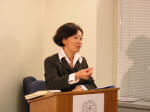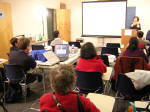
The familiar debate over language and thought rears its head again with the publication of William C. Hannas’s controversial book, “The Writing on the Wall: How Asian Orthography Curbs Creativity” (University of Pennsylvania Press). In brief, Hannas contends that the writing systems of China, Japan, and Korea are inherently deterrent to abstract construction and those who use them are by inference deficient in analytic thinking and creativity. Note that Hannas only blames the writing systems in the three nations whose languages happen to share a history of linguistic transactions. Conveniently, Hannas forgets to address the oral tradition of China, Japan, and Korea. Hannas’s failure to address all aspects of a linguistic system raises doubts about his argument about the failure of East Asian scientists and businesses to discover and invent new technology.

Ironically, this focus brings up yet another fallacy in Hannas’ argument, namely that the number of Nobel Prize winners by nationality represents an adequate measure of creative capability. The racial undertone of Hannas’s argument recalls the controversy surrounding the publication of Richard J. Herrnstein and Charles Murray’s “The Bell Curve: Intelligence and Class Structure in American Life” (The Free Press) in which similar assumptions are made about the link between race and cognitive ability. As with any sweeping generalization, opportunities abound to assail its logic. How would Hannas account for recent research in Japan that demonstrated how children lost their ability to discriminate between the sounds of l and r, which are not phonemically distinguishable in the Japanese language? These children were able to discern the difference of the two sounds but lose that ability after they fully incorporate their native language. Does their cognitive faculty necessarily diminish in turn?
Inevitably, something more complex is at play. Having grown up in China, where I completed my undergraduate education, I know the many filters and inhibitions imposed upon educational and political systems that, in my opinion, are far more potent agents in the development of original thought and creativity. The credibility of my critique of Hannas’s theory is based on my training in linguistics and my native speaker’s understanding of the history and acquisition of Chinese language, and its capacity for encouraging rather than stifling creativity.

